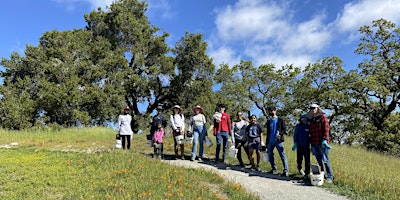At the center of life, is stream habitat. It’s the lifeblood of the landscape and helps support more life than any other habitat type. But just how much life does stream habitat support? And what makes it healthy? Our new infographic helps answer these questions.
Take a look…you’ll probably never look at our streams the same way again:
As you can see from this infographic, streams provide some of the richest habitat for wildlife and plants. Their health is a priority for POST.
Monitoring fish populations, steelhead trout in particular, is a useful indicator of the health of our streams. This is because steelhead use nearly the entire stream system, from the tiny headwaters where their eggs hatch to the stream’s mouth where they prepare to enter the ocean as adults.
Most of our local streams are currently impaired. They are either lacking fish entirely, or fish occur at only low abundances. But there is good news! There are fish recovery programs occurring all over the Peninsula and there are things you can do to help, especially if you are lucky enough to live on one.
- Protect streams from pollution and erosion
- Leave water in streams, especially during warm summer months
- Plant and care for native trees, shrubs and wetland plants around streams
- Work with your local Resource Conservation District to consider:
- Doing a woody debris project, which adds logs back into streams to create pools and riffles
- Removal of barriers so fish can swim upstream to breed.
- Help protect estuaries, which are key transition zones for young fish to feed and acclimate before heading out to sea.
- Support smart water management with your water district.
These activities (and lots of others!) will help build healthy streams and enable fish to return to our watersheds. Getting a jumpstart on recovering healthy stream habitat is absolutely vital to do now. The climate is only getting more stressful for cool-loving fish like steelhead and Coho. Increasing stream temperatures, along with heavy rain events create dangerous conditions for little fish. Healthy vegetation cover shades streams. Tree roots and downed pieces of woody debris in channels creates safe refuge.
Without a doubt, if we can get the steelhead back in our streams and keep them healthy and abundant, we know that our streams are healthy too.
Share this Image On Your Site
Sources:
California Department of Forestry and Fire Protection. 2002. Multi-source Land Cover Data (2002 V2). http://bit.ly/1roCcqS
California Native Plant Society. 2014. Riparian Plants Native to California. http://bit.ly/1UvJu87
Chaney, E., W. Elmore, and W.S. Platts. 1990. Livestock grazing on western riparian areas. Northwest Resource Information Center, Inc. Eagle, Idaho. Chaney, E., W. Elmore, and W.S. Platts. http://bit.ly/24Pjsho
Connecticut Department of Environmental Protection. 2004. Large Woody Debris Fact Sheet. http://1.usa.gov/1Yqorp4
Michael G. Barbour. 2007. Terrestrial Vegetation of California. http://bit.ly/21l4vTq
Point Blue. 2004. The Riparian Bird Conservation Plan 2.0. http://bit.ly/1OnYPqI
Resource Conservation District of Santa Cruz County. 2014. San Vicente Creek Watershed, Plan for Salmonid Recovery. http://bit.ly/1Uy7NOA
Robert Ornduff, Phyllis M. Faber, & Todd Keeler-Wolf. 2003. Introduction to California Plant Life. http://bit.ly/1ZRQA6Y
San Francisco Bay Regional Water Quality Control Board. 2004. Local Government Riparian Buffers in the San Francisco Bay Area. http://bit.ly/1PsCiE4
United States Department of Agriculture. 1997. Riparian Forest Buffer Handbook for the Chesapeake Bay Watershed. http://bit.ly/1VY4eGz
More on Our Website
Event
Volunteer Outside for Earth Day at Pearson-Arastradero Preserve
Pearson-Arastradero Preserve
Posted onAbout Post
Peninsula Open Space Trust (POST) protects open space on the Peninsula and in the South Bay for the benefit of all. Since its founding in 1977, POST has been responsible for saving more than 87,000 acres as permanently protected land in San Mateo, Santa Clara and Santa Cruz counties. Learn more
